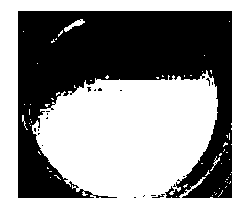Novel lithium ion battery separating membrane and preparation method thereof
A technology for lithium-ion batteries and diaphragms, applied in the field of preparing lithium-ion battery diaphragms
- Summary
- Abstract
- Description
- Claims
- Application Information
AI Technical Summary
Problems solved by technology
Method used
Image
Examples
preparation example Construction
[0033] The preparation method of novel lithium-ion battery diaphragm of the present invention comprises the following processing steps:
[0034] (1) Soak the cotton fiber in water for 2-8 hours, thaw out, and beat to obtain cotton pulp with a beating degree of 60°SR-80°SR;
[0035] (2) Wash the polypropylene fiber with sodium dodecylbenzenesulfonate and dry it;
[0036] (3) Mix the cotton pulp in the first step with the polypropylene fiber in the second step according to the mass ratio, add dispersants, adhesives, retention aids and aids, add water to dissolve and mix to form a slurry;
[0037] (4) The obtained slurry is dehydrated through a copper mesh, squeezed, and then dried by a drying cylinder;
[0038] (5) Hot pressing at 135°C to 150°C to obtain a finished diaphragm.
[0039] In order to improve the lyophilic performance and porosity of the lithium-ion battery separator, the present invention adopts a wet papermaking process, using cotton fibers and polypropylene fib...
example 1
[0042] Step 1. Soak 360g of cotton fiber in 5L of water for 4 hours, add 18L of water into the pulp tank of the beater, and pressurize the cotton fiber for beating. Measure the degree of beating every 10 minutes. °, 75°, 80° cotton pulp for use.
[0043] Step 2: washing the polypropylene fiber with sodium dodecylbenzene sulfonate to remove the grease on the surface of the polypropylene fiber, and then drying the fiber at a temperature of 50°C to 60°C.
[0044] Step 3. According to the quantitative ratio of 40g / m3~50g / m3, mix the slurry in step 1 and the polypropylene fiber material in step 2 in a mass ratio of 2:1, and then add 0.5% dispersant and 5% glue Viscosity agent, 0.5% flow aid and filter aid, water is added to dissolve and disperse the fibers and mix them evenly to obtain a slurry.
[0045] Step 4: Dehydrate the slurry prepared in Step 3 through a copper mesh, then press to remove excess water in the paper, and then dry it in a drying cylinder at 120°C to obtain a di...
example 2
[0048] Step 1. Soak 360g of cotton fiber in 5L of water for 4 hours, add 18L of water into the pulp tank of the beater, and pressurize the cotton fiber for beating. Measure the degree of beating every 10 minutes. °, 75°, 80° cotton pulp for use.
[0049] Step 2: washing the polypropylene fiber with sodium dodecylbenzene sulfonate to remove the grease on the surface of the polypropylene fiber, and then drying the fiber at a temperature of 50°C to 60°C.
[0050] Step 3. According to the quantitative ratio of 40g / m3~50g / m3, mix the cotton pulp and polypropylene fiber material at a mass ratio of 1:1, and then add 1.0% dispersant, 8% adhesive, and 1.0% flow aid Filter aid, add water to loosen and disperse the fibers and mix evenly to obtain a slurry.
[0051] Step 4: Dehydrate the slurry prepared in Step 3 through a copper mesh, then press to remove excess water in the paper, and then dry it in a drying cylinder at 120°C to obtain a diaphragm.
[0052] Step 5. Hot pressing the abov...
PUM
| Property | Measurement | Unit |
|---|---|---|
| length | aaaaa | aaaaa |
| diameter | aaaaa | aaaaa |
Abstract
Description
Claims
Application Information
 Login to View More
Login to View More - R&D
- Intellectual Property
- Life Sciences
- Materials
- Tech Scout
- Unparalleled Data Quality
- Higher Quality Content
- 60% Fewer Hallucinations
Browse by: Latest US Patents, China's latest patents, Technical Efficacy Thesaurus, Application Domain, Technology Topic, Popular Technical Reports.
© 2025 PatSnap. All rights reserved.Legal|Privacy policy|Modern Slavery Act Transparency Statement|Sitemap|About US| Contact US: help@patsnap.com

